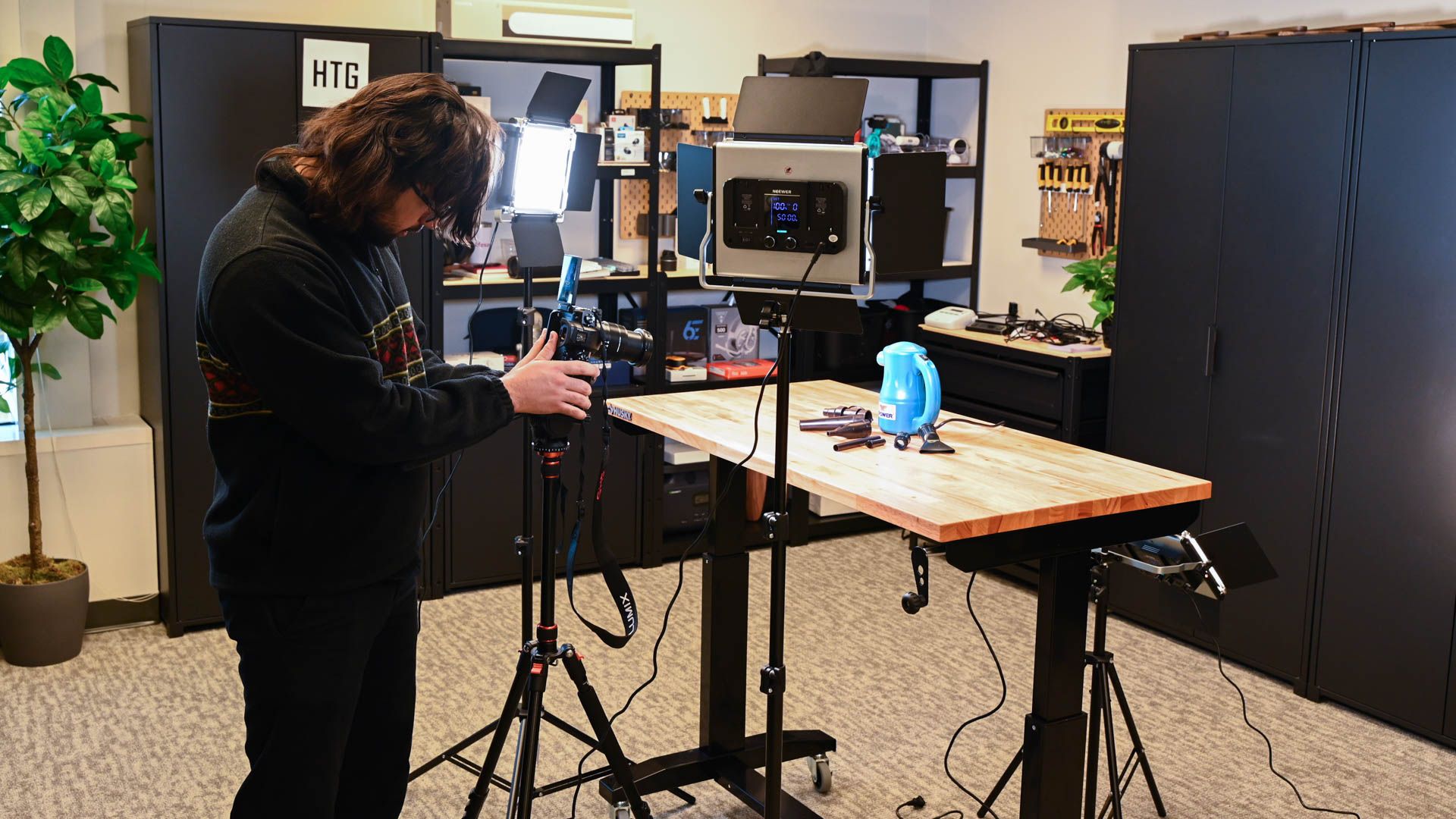
Top-Rated DSLR Camera Models for Photography Enthusiasts

Top-Rated DSLR Camera Models for Photography Enthusiasts
While mirrorless cameras are constantly being innovated, there are still plenty of reasons to choose a DSLR cameras. From premium to affordable entry-level models, there’s a DSLR for everyone.
Nikon D850
Best DSLR Camera Overall
See at bestbuy
Canon EOS Rebel T8i
Best Budget DSLR Camera
See at Walmart
Nikon D3500
Best DSLR for Beginners
See at Walmart
Nikon D780
Best DSLR Camera for Video
$2197 at Amazon
What to Look for When Choosing a Quality DSLR Camera
Mirrorless cameras may be taking over the market, but DSLRs still have plenty to offer. There are many reasons to choose a DSLR camera over a mirrorless one, including more robust designs and better battery life.
But you need to consider your skill level before anything else. If you’re a beginner, you should ask yourself if it’s a good choice to splash out several thousand dollars on a professional-grade camera or if it’s better to learn the basics on an entry-level model. You can spend as much or as little as you like on a DSLR, from just a few hundred dollars for a beginner model to four-figure investments on mid and premium-range options.
You also need to ask yourself if you will be leaning more toward still photography or videography. For the latter, it may be better to consider a mirrorless camera . A DSLR is an excellent option for the former or even a balance of the two.
There are some specifications you need to look out for before choosing. The image sensor is essential. Entry-level APS-C sensors provide good image quality at affordable prices but come with a crop factor . Higher-resolution sensors provide better detail, especially if you want to print larger than standard photo-sized prints. Full-frame sensors offer better depth of field and low-light performance. They are better choices for video, too, but are generally more expensive.
A good autofocus (AF) system is also crucial . Professionals need advanced phase detection with many focus points (often 51 to 100+) for better focusing and subject tracking. Entry-level DSLRs have simpler phase detection systems with fewer focus points (generally around 9 to 39) and less sophisticated tracking. But this makes the cameras less expensive and more user-friendly.
Burst shooting works hand-in-hand with the autofocus, with beginner DSLRs typically offering around 5FPS (the number of frames it can shoot per second). This rate is plenty for the casual shooter, but if you want to freeze fast-paced action, such as a split-second moment in time during a sports game, then you need something with a high burst rate. 8FPS is typically considered to have a high burst rate and is usually fast enough for enthusiasts. Some pro-grade DSLRs go much higher, but then so do their costs.
| How Did We Research | ||
|---|---|---|
| Models Evaluated | Hours Researched | Reviews Analyzed |
| 20 | 6 | 20 |
How-To Geek’s product recommendations come from the same team of experts that have helped people fix their gadgets over one billion times. We only recommend the best products based on our research and expertise. We never accept payment to endorse or review a product. Read More »
Best DSLR Camera Overall: Nikon D850
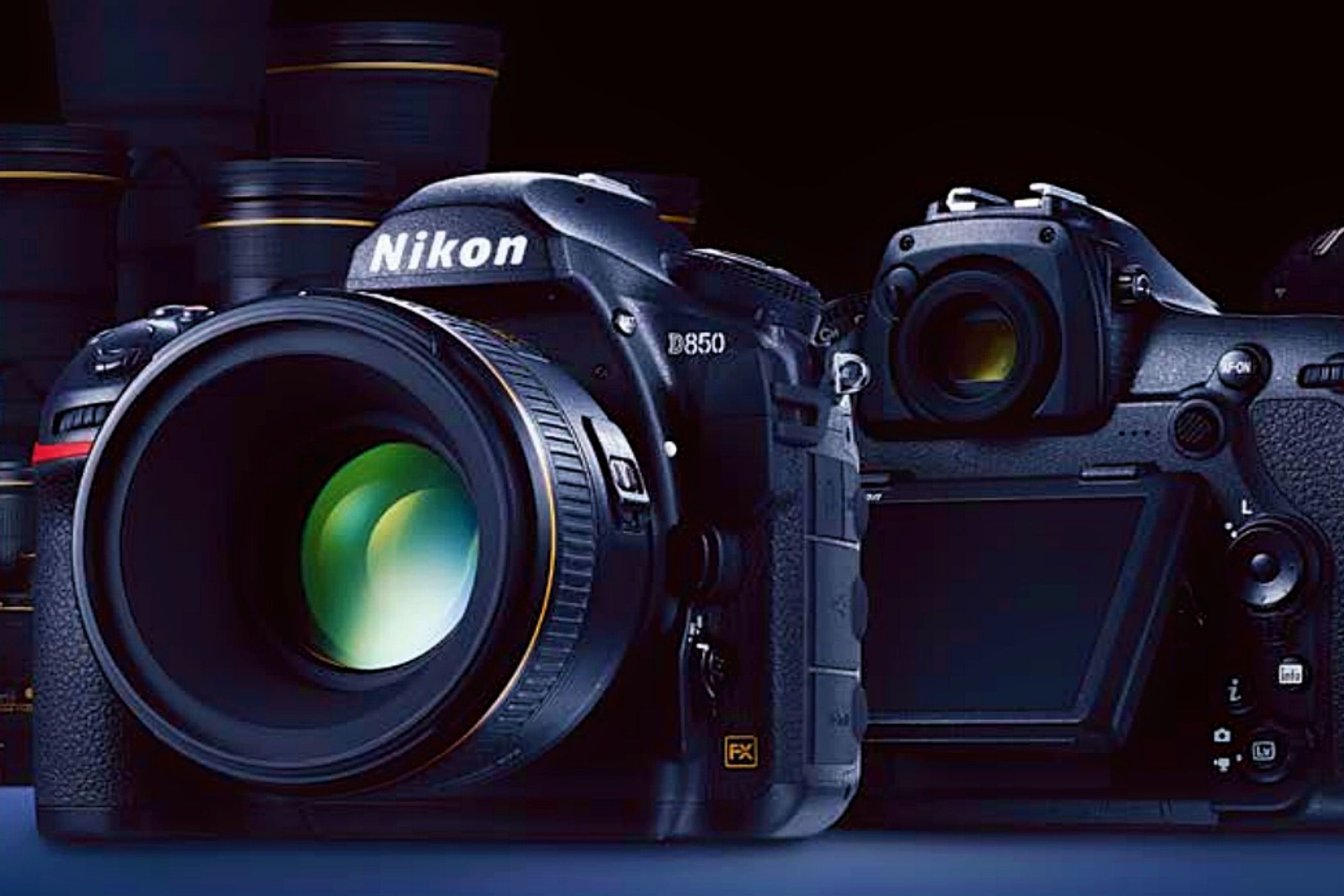
Nikon
| Pros | Cons |
|---|---|
| ✓ Tilting touchscreen | ✗ Expensive |
| ✓ Excellent battery life | ✗ No 120FPS slow-motion video |
| ✓ Reliable autofocus | |
| ✓ Silent live-view shooting | |
| ✓ Sturdy build and weather-sealed | |
| ✓ Premium image quality |
The Nikon D850 is still the go-to choice for a DSLR camera for amateur enthusiasts and professional shooters alike. It has been around for a while, but its devoted following in the DSLR community hasn’t waned. The fact that it has won several top awards solidifies its position as a leading choice even after all these years.
It has come down in price in recent times, and while some pricier DSLRs are out there, such as the legendary Canon EOS-1D X Mark III or the Nikon D6 , it is still a premium model. And make no mistake, this camera is big, robust, and weather-sealed. With its excellent battery life, it’s ready to go to the extreme.
Its 45.7MP BSI CMOS sensor delivers exceptionally sharp images. Even as the light dims and the ISO increases, the detail remains well-defined. This detail is evident in bright and shadowy areas, presenting us with one of the best-in-class dynamic ranges featured on a DSLR.
Color accuracy is another key strength of the D850’s image quality. The camera produces vibrant, natural colors. This precision is evident when snapping portraits, where it showcases authentic skin tones and subtle hues unmatched by most of its rivals. Of course, you will need to choose the best Nikon lens for your photography style.
Autofocus is another dependable asset this powerhouse can boast. While it may be a little on the sluggish side in live view , it is highly reliable and accurate through the optical viewfinder, even after the sun has set. With dependable subject tracking and a respectable 7FPS burst shooting (or 9FPS with the optional battery grip), you can comfortably capture fast-moving subjects, making it an excellent choice for shooting sports events or wildlife.
While Nikon primarily markets the D850 as a stills camera, it also produces some decent results for the videographer. You can shoot 4K video at 24/25/30FPS and in Full HD 1080p at up to 60FPS, with a maximum recording time of 30 minutes.
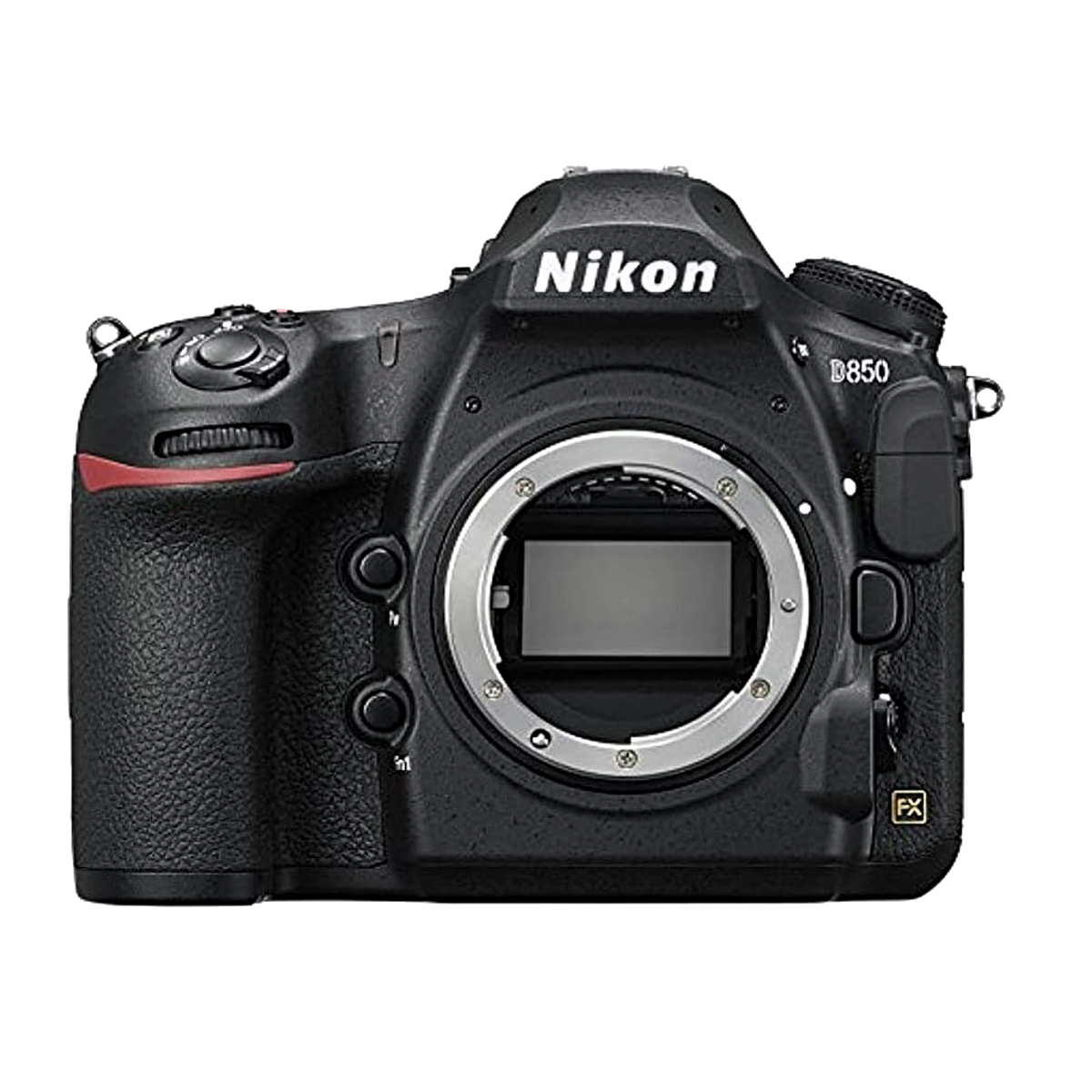
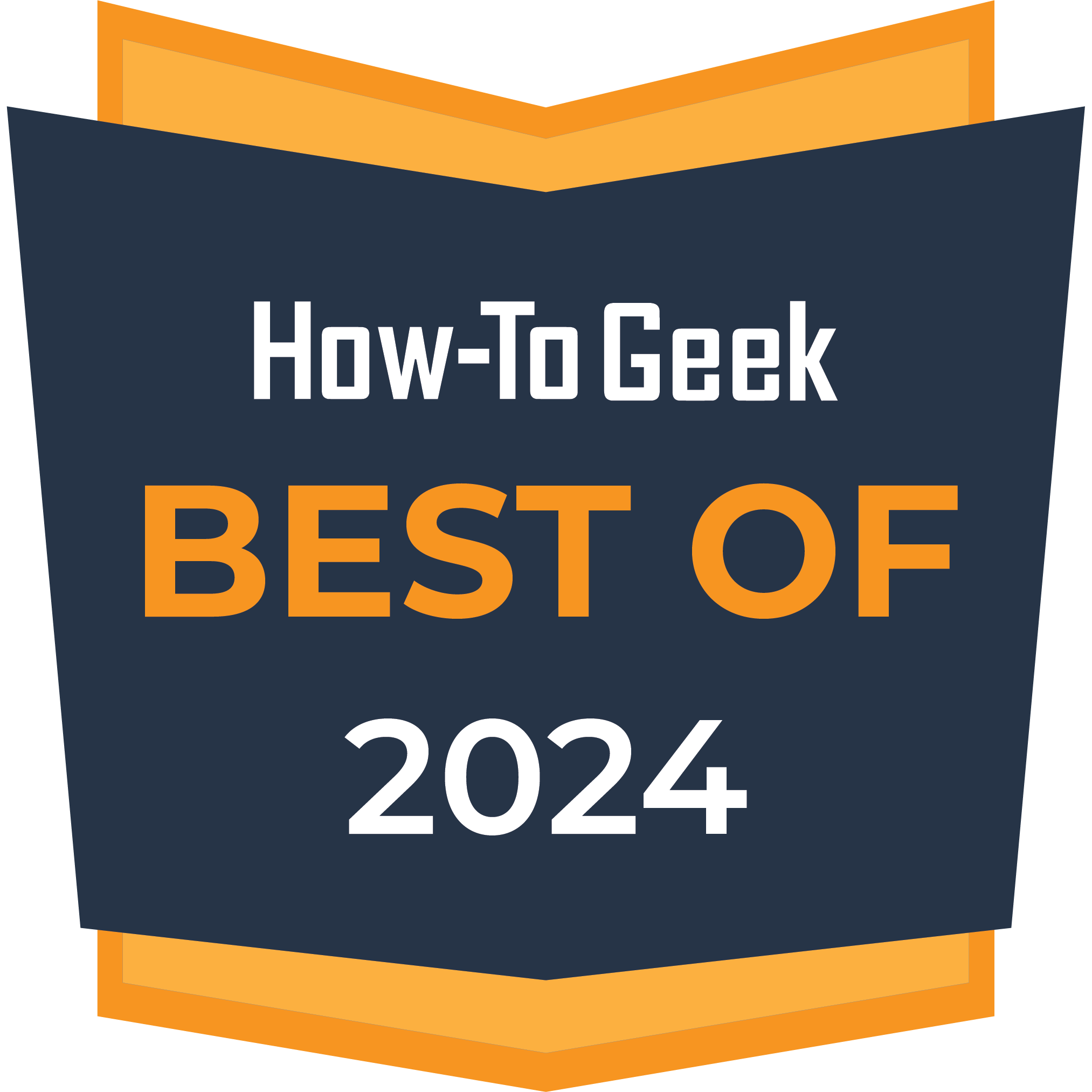
Best DSLR Camera Overall
Nikon D850
The Nikon D850 is a powerful professional-level camera that can hold up to just about any shooting scenario.
Best Budget DSLR Camera: Canon EOS Rebel T8i
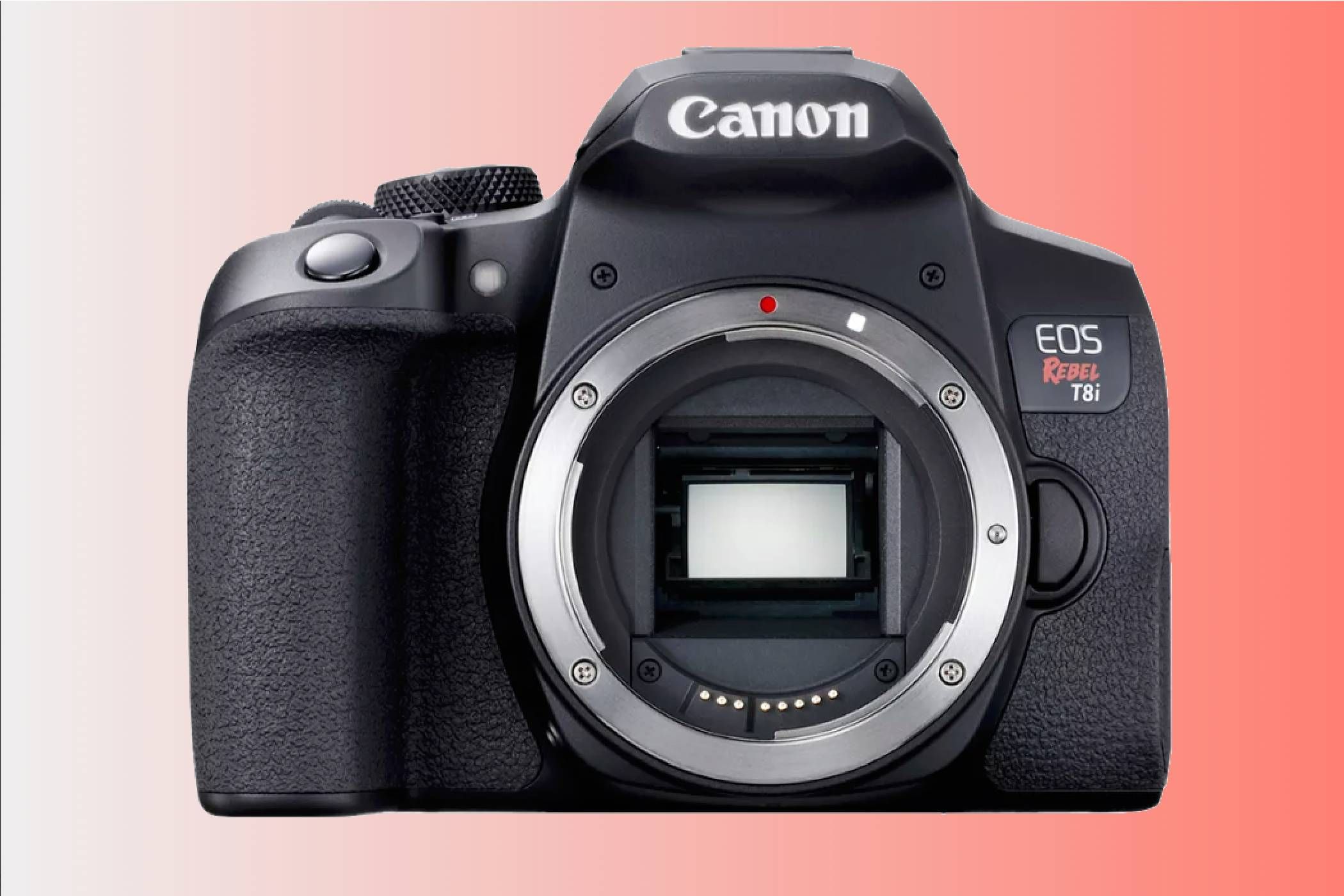
Canon
| Pros | Cons |
|---|---|
| ✓ Reliable and fast autofocus | ✗ Not weather-sealed |
| ✓ Good battery life | ✗ Cropped 4K footage |
| ✓ Intuitive guides for beginners | |
| ✓ 4K video | |
| ✓ Excellent image quality |
You don’t need to spend a fortune to get a quality DSLR. The Canon EOS Rebel T8i is an entry-level APS-C DSLR that offers excellence at an affordable price. Sure, it doesn’t quite match the levels of our top pick, the Nikon D850, nor does it get near the professional cameras at the absolute top of the DSLR food chain, but it is still an excellent choice.
The Canon EOS camera offers an excellent balance of value, features, and performance. However, it’s not the absolute lowest price tag attached to a DSLR. If you seek rock-bottom pricing, consider something like the Canon EOS Rebel T7 . It doesn’t quite match the T8i, but it does offer exceptional savings with a surprisingly good performance, especially for newcomers to the DSLR world.
But, back to the T8i. This compact and lightweight camera is also a good choice for newcomers to DSLR photography. It’s easy to use; the menu system on the bright LCD is easy to navigate, and there are some excellent guides to help you get started. Newbie vloggers will appreciate the tilting screen, the 4K/24p video capability, the 16:9 vertical video output, and the digital image stabilization .
The 24MP APS-C sensor delivers detailed stills with crisp images and attractive colors, especially at lower ISOs. Noise is pretty evident at higher ISOs, so you’ll need to consider a good tripod for shooting in low light. Battery life is also excellent, with a rating of 800–1,240 shots when using the optical viewfinder. To round things off, the EOS Rebel T8i has a decent 18-55mm kit lens, although it may not have the best low-light performance.
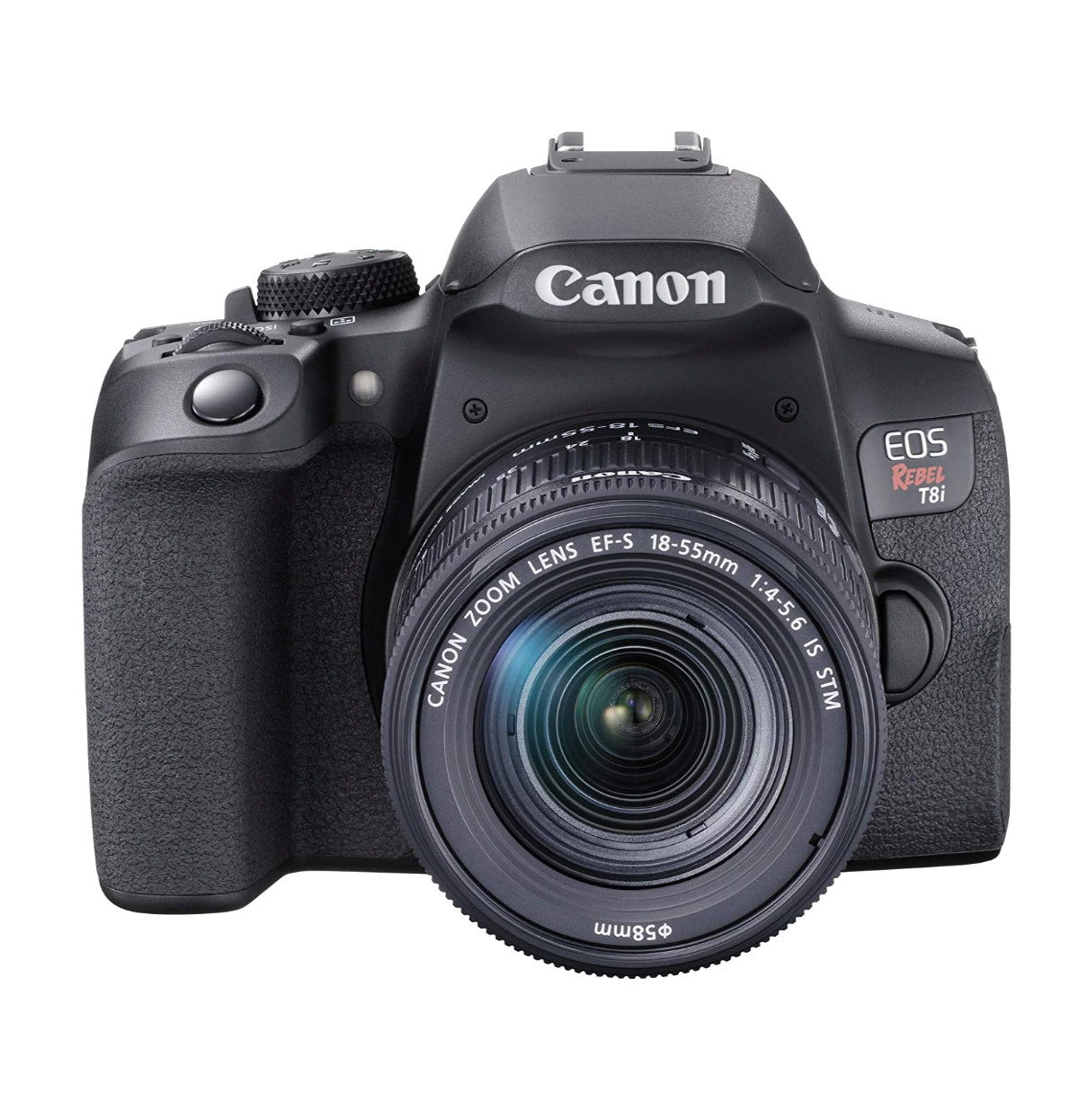

Best Budget DSLR Camera
Canon EOS Rebel T8i
With an intuitive menu system for beginners, 4K video recording, and sharp, detailed stills, the Canon EOS Rebel T8i is an affordable pick for DSLR enthusiasts and beginners.
Best DSLR for Beginners: Nikon D3500
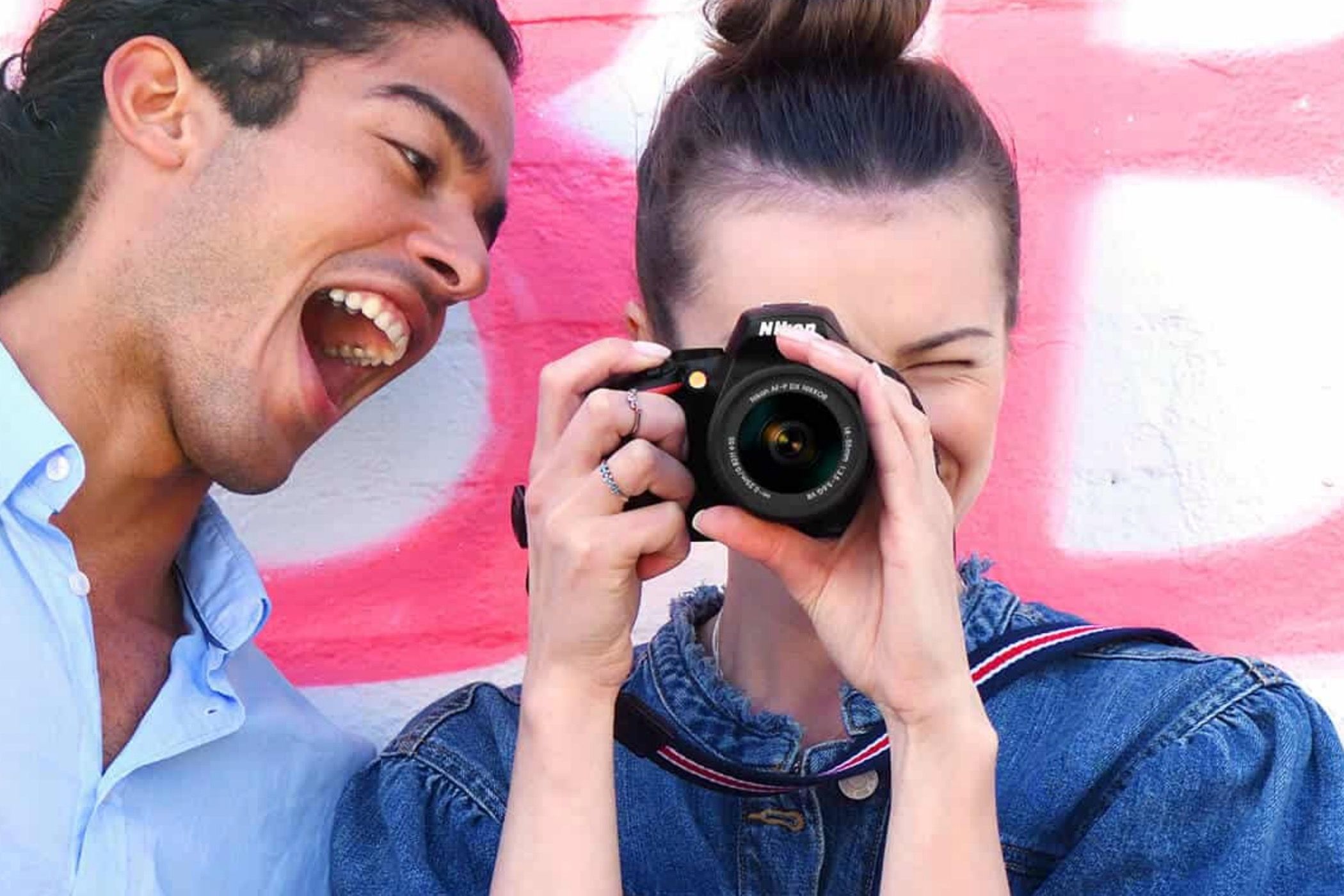
Nikon
| Pros | Cons |
|---|---|
| ✓ Useful guide modes for beginners | ✗ No 4K video |
| ✓ Outstanding battery life | ✗ No touchscreen |
| ✓ Excellent image quality | |
| ✓ Compact and lightweight | |
| ✓ Automatic SnapBridge Bluetooth transfers | |
| ✓ Affordable |
Despite the relentless rise of the mirrorless camera, it’s never too late to get into DSLR photography. In fact, kickstarting a DSLR career has never been so affordable. While flagship models stubbornly remain above price for most, you can find plenty of bargains at the entry-level end.
One of the best cameras for newcomers is the Nikon D3500 . Its straightforward design and intuitive features make it an excellent entry-level choice. Newbies also benefit from its helpful Guide Mode. This mode assists budding enthusiasts in finding their way around the camera and can teach techniques such as softening backgrounds or freezing motion.
The D3500’s DX-format 24.2MP CMOS sensor offers great image quality for the price. With consistently sharp edge-to-edge details and vibrant, rich colors, it’s a camera that will quickly have newbies upping their level.
However, the autofocus system is relative to its price. It works well for single shots but may struggle to keep up and track in dim light. At 5FPS, burst shooting is good enough for most beginners. It’s not the camera of choice for capturing fast-paced action, but it’s suitable for general photography and learning the basics of shooting, including manual focusing .
Ergonomics are good, and despite the compact design, it should still be comfortable enough for large hands. With its impressive battery life of up to 1,550 shots, you have everything you need for an enjoyable day or two of DSLR shooting.
However, videographers looking for a budget-priced DSLR should consider the Canon EOS Rebel T8i instead. The Nikon D3500 doesn’t shoot in 4K, but it can shoot in Full HD at up to 60FPS, so it is fine for short videos and clips for social media.
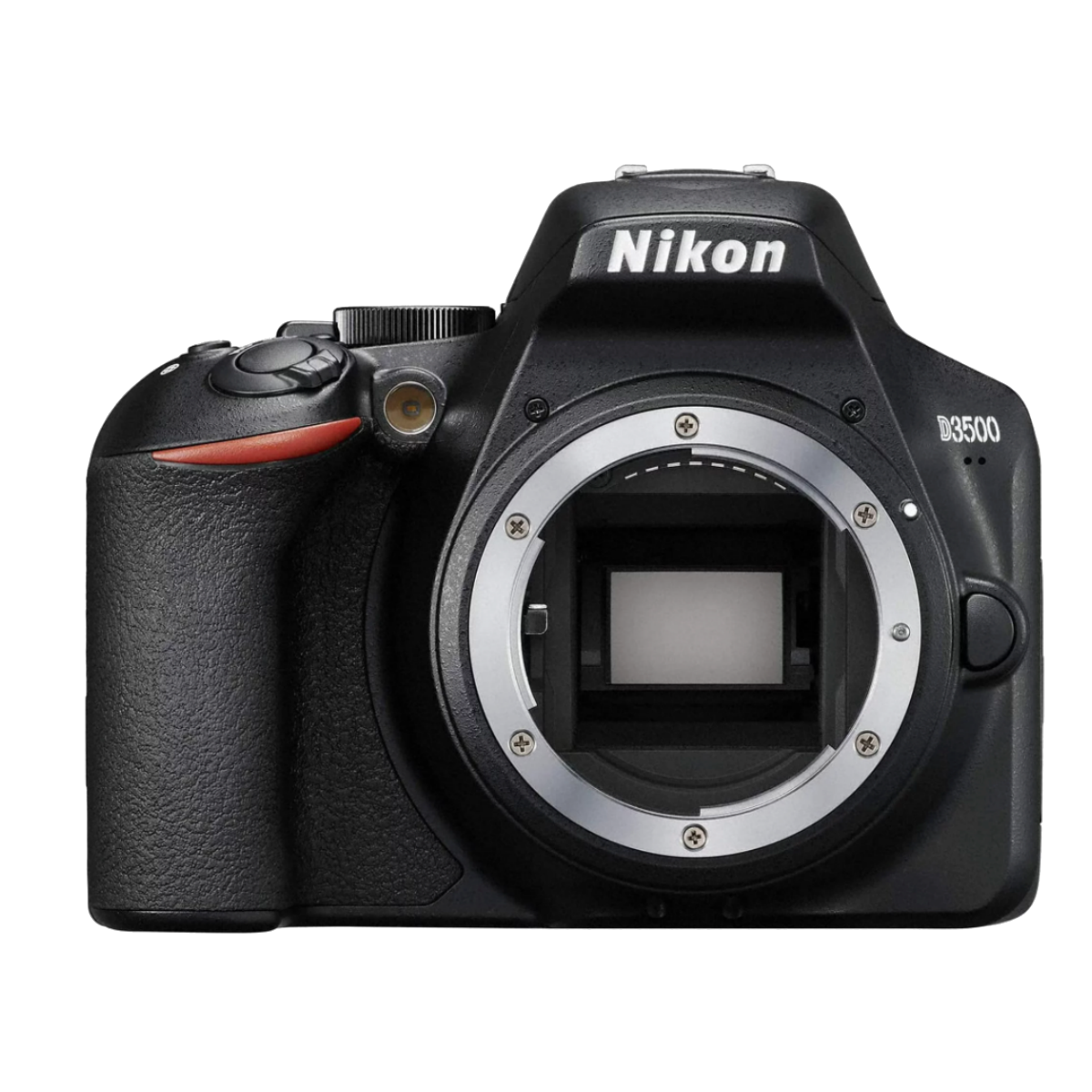

Best DSLR for Beginners
Nikon D3500
This APS-C sensor DSLR camera is perfect for beginners to learn the basics without breaking the bank.
Best DSLR Camera for Video: Nikon D780
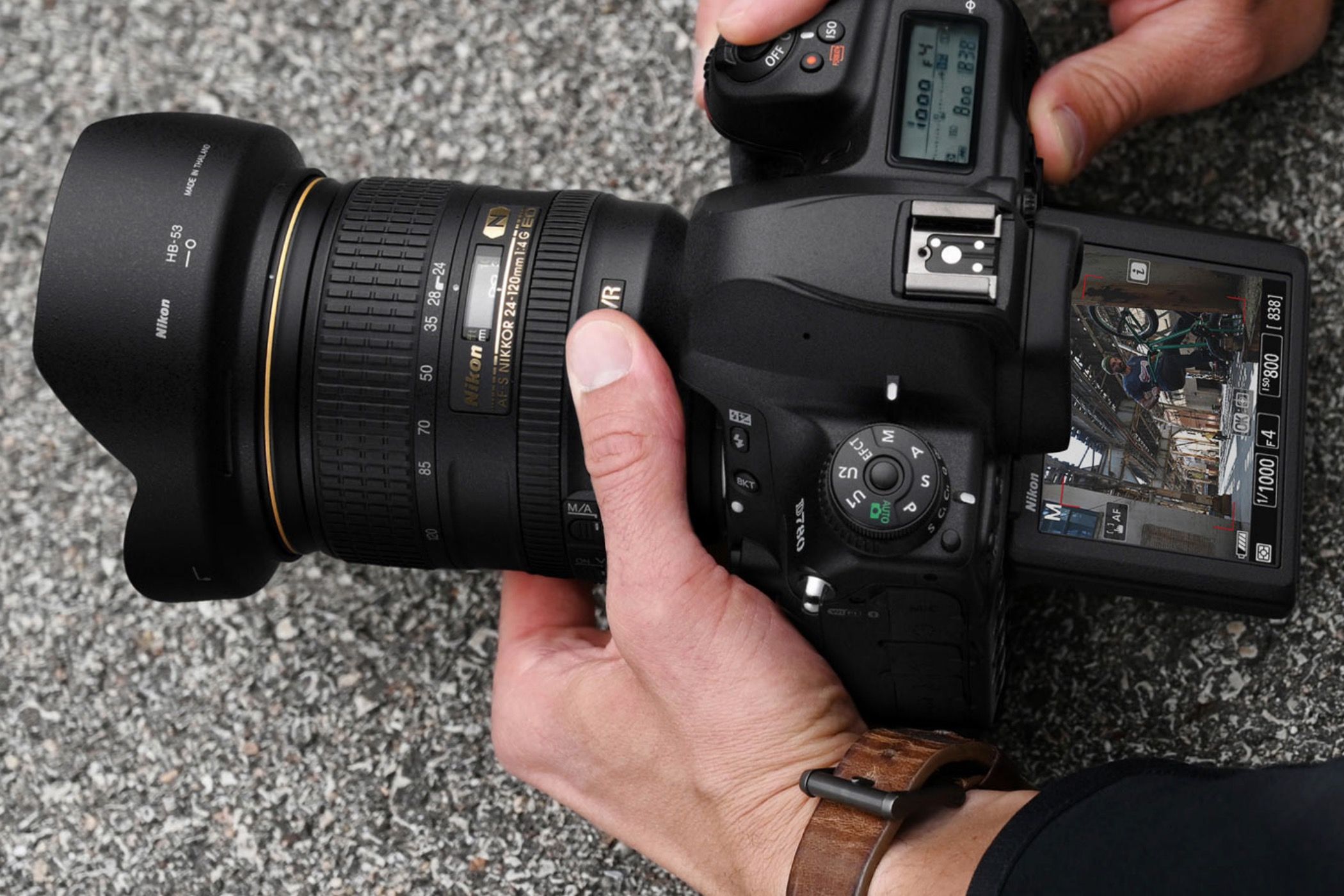
Nikon
| Pros | Cons |
|---|---|
| ✓ Premium battery life | ✗ Big and bulky |
| ✓ Mic and headphone jacks | ✗ Pricey |
| ✓ Reliable Wi-Fi and Bluetooth connectivity | |
| ✓ Uncropped 4K video | |
| ✓ Good live-view AF |
Most photographers will tell you mirrorless cameras are better for shooting video than DSLRs. They are not wrong—however, that doesn’t mean DSLRs are a poor choice.
Cameras such as the Canon EOS-1D X Mark III , deliver stunning videos, but you need to be serious about your filmmaking at such a premium price point. But, if you have your heart set on a DSLR and want to include quality video in your new venture, the Nikon D780 offers excellent filmmaking performance at a midrange price.
This camera does have everything you need to up your videography game. To begin with, you can shoot 4K video in 24/25/30FPS and Full HD movies get the bonus of 120FPS for some quality slow-motion. In addition, with its 10-bit 4K HDMI output and N-Log support, you get a wide dynamic range, rich color depth for cinematic recordings, and flexible post-production color grading.
A 51-point autofocus system with 15 cross-type points boosts your video shooting skills, offering one of the best DSLR autofocus systems available. It’s speedy and reliable and provides precise subject tracking. With on-sensor phase-detection pixels in live view, performance remains consistent whether using the viewfinder or the LCD screen. It also keeps on delivering after sunset, enabling the enjoyment of reliable focus even in challenging light.
The D780 also has a durable design and is fully weather-sealed. It features a deep, ergonomic grip for comfortable shooting over extended periods, further enhancing its suitability for videographers.
However, don’t presume this camera is only for shooting video. It’s an excellent camera for stills, too. The 24.5MP full-frame sensor delivers first-class quality, and its broad ISO range allows you to shoot in various lighting conditions with reduced noise at higher ISOs. You can also capture fast action with its 7FPS burst shooting (12FPS in live view using the electronic shutter).
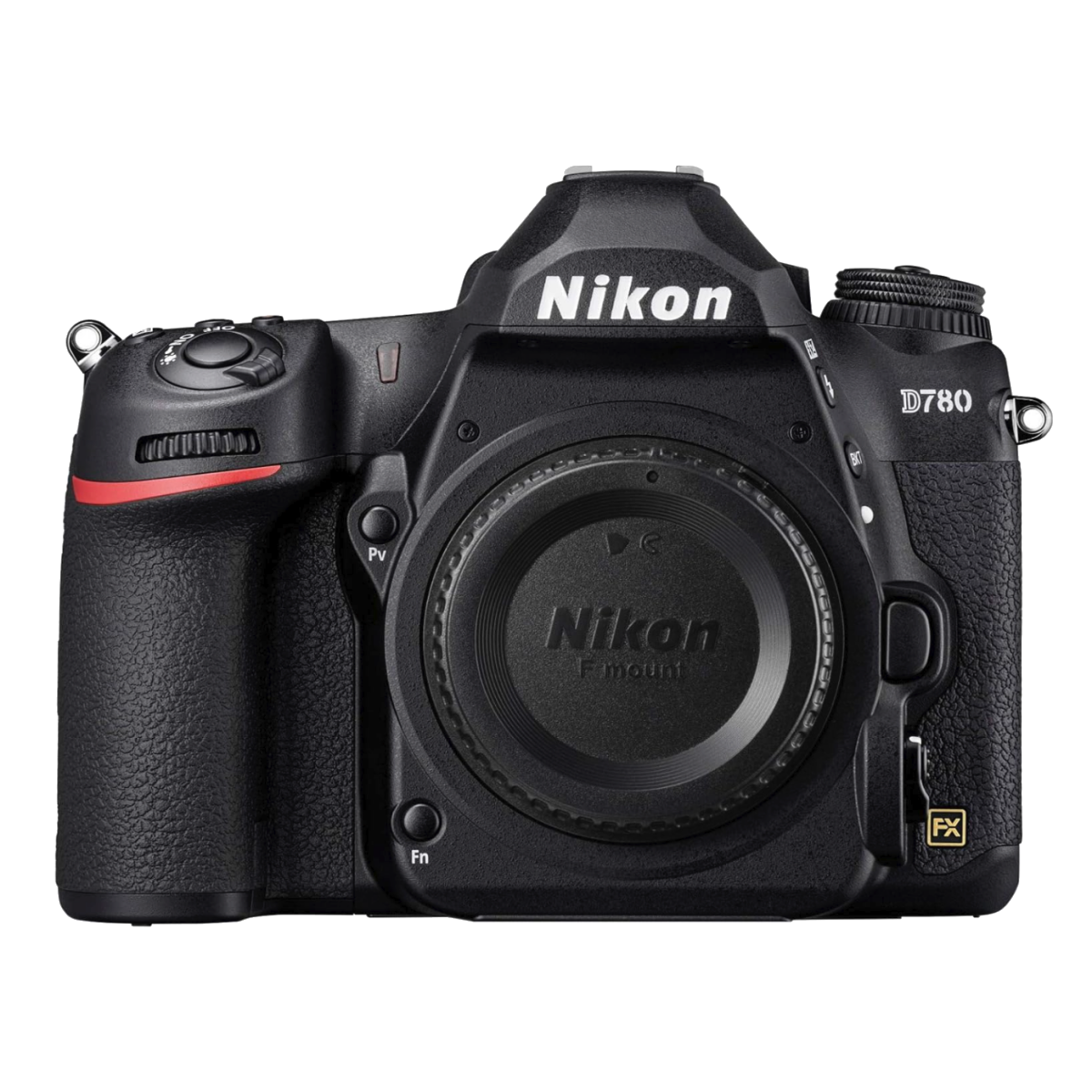

Best DSLR Camera for Video
Nikon D780
Nikon’s D780 camera is a quality all-rounder with one of the best video recording systems you’ll find without going mirrorless.
FAQ
What does DSLR stand for?
DSLR stands for “digital single-lens reflex.” It’s the digital version of a traditional SLR camera. DSLRs utilize a mirror to direct light from the lens to the optical viewfinder. This allows photographers to see exactly what the camera lens ‘sees.’
The mirror flips up when the photographer presses the shutter button, allowing light to hit the sensor and capture the image in digital format.
What is the difference between a DSLR and a mirrorless camera?
There are significant differences between DSLR and mirrorless cameras. If you are currently pondering which type to buy, you will benefit from reading a more detailed explanation before deciding.
For a brief overview, consider the following:
- DSLRs tend to be heavier and bulkier
- DSLRs are arguably more durable
- DSLRs usually have more extensive battery lives
- DSLRs have a more comprehensive range of lenses
- DSLRs use optical viewfinders
- Mirrorless cameras use electronic viewfinders
- Mirrorless cameras generally have better video capabilities
- Mirrorless cameras boast better live-view autofocus systems
Why do people prefer a DSLR camera?
Many photographers prefer the more traditional approach of a DSLR camera. The optical viewfinder, for example, allows them to see lag-free images from the lens without any electronic processing.
Many also argue that DSLRs still offer superior image quality over mirrorless cameras, but as mirrorless innovations advance, we hear this argument less frequently. Another dwindling argument is that DSLRs boast superior autofocus systems. Just a short time ago, this was absolutely correct, but with mirrorless engineering constantly evolving, they are rapidly catching up in this respect, too.
Durable builds and better battery lives make DSLRs good choices for outdoor work, especially if you’re shooting somewhere with limited power options or in more extreme conditions. The bulkier build of the DSLR also gives more space on the camera body for additional manual controls, offering the DSLR photographer better control and customization. However, with the continuous mirrorless evolution, this is another DSLR advantage that is being caught up on.
Another reason why many people still prefer the DSLR is that because of their longer history, they have a wider selection of lenses to choose from.
Do mirrorless camera lenses work on a DSLR camera?
Unfortunately, mirrorless lenses are incompatible with DSLRs. However, if you are thinking of switching from DSLR to mirrorless, then your lenses can work on your new mirrorless if you buy the correct adapter for them.
Do I need a CFExpress card for my DSLR camera?
Generally speaking, your DSLR does not require a CFExpress card. If you own a professional-grade DSLR, however, it is definitely worth considering. Cameras like the Canon EOS 1D X Mark III or the Nikon D6 are equipped to take advantage of the faster speeds for continuous shooting bursts, high-resolution images, and 4K/8K video recording. So, if you’re not lucky enough to own one of these premium cameras, the likelihood is that the DSLR you have is incompatible with CFExpress cards.
Also read:
- [New] Guide to Uploading Videos Into YouTube Lists
- [Updated] How ASMR Can Enhance Your Physical & Mental Health
- 5 Must-Know Fixes to Avoid Darkness on Game Capture by OBS
- In-Depth Analysis and Rating of the Ring Video Doorbell Pro
- Lenovo's Ultraportable Marvel: In-Depth Look at the ThinkPad X1 Nano
- Protecting Your Information: Understanding the Risks of Using Personalized GPT Models Like ChatGPT
- Tactile Tech Triumph: A Detailed Look at Apple's Groundbreaking iPhone 15 Pro
- The Ultimate Mini USB Wi-Fi Adapter (U631): Unmatched Connectivity & Reliable Design
- Top-Ranked Encryption Cryptocurrency Wallet: How to Choose & Verify Your Digital Funds - YL Computing's Guide
- Title: Top-Rated DSLR Camera Models for Photography Enthusiasts
- Author: Kenneth
- Created at : 2025-02-07 05:19:29
- Updated at : 2025-02-10 09:30:25
- Link: https://buynow-tips.techidaily.com/top-rated-dslr-camera-models-for-photography-enthusiasts/
- License: This work is licensed under CC BY-NC-SA 4.0.